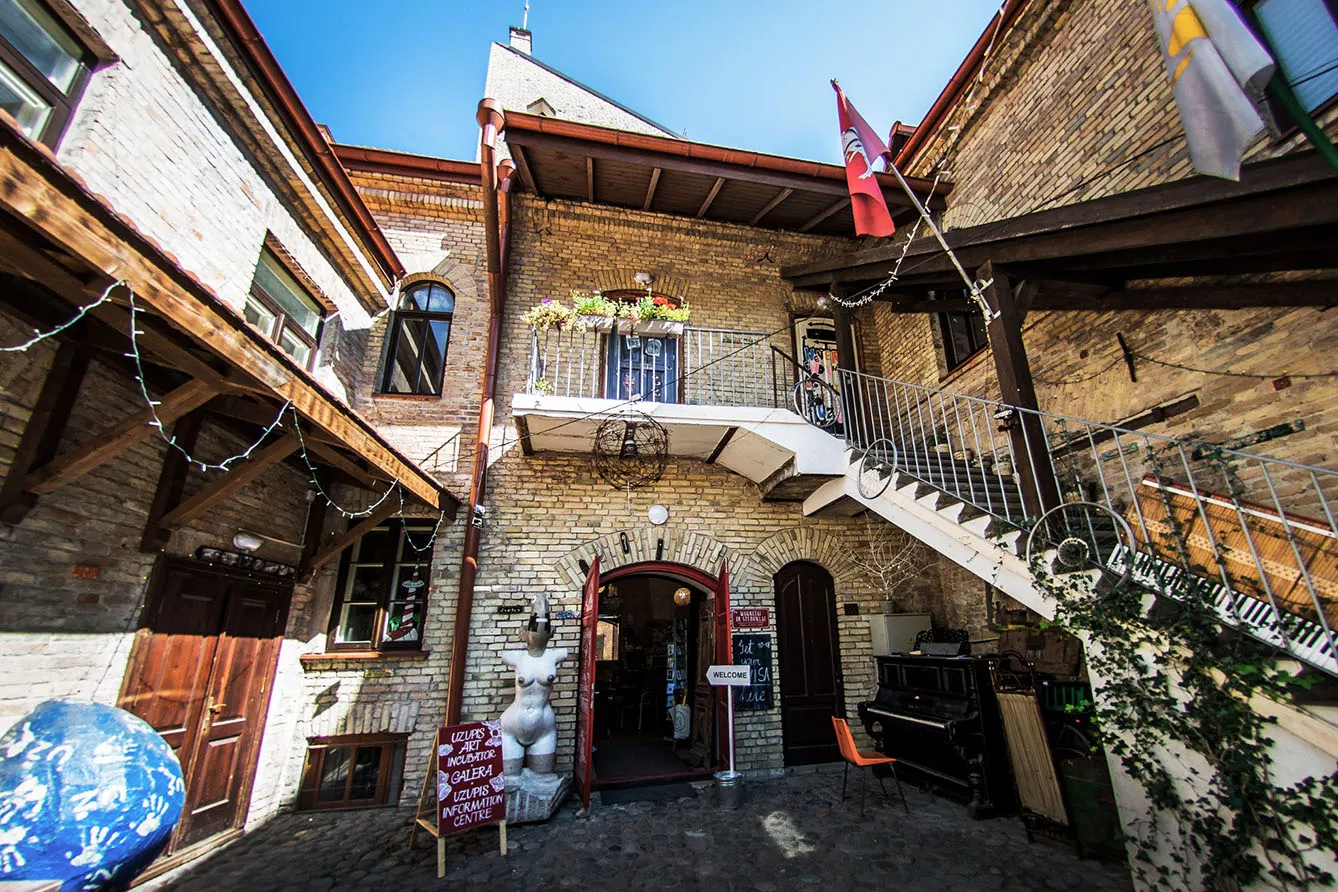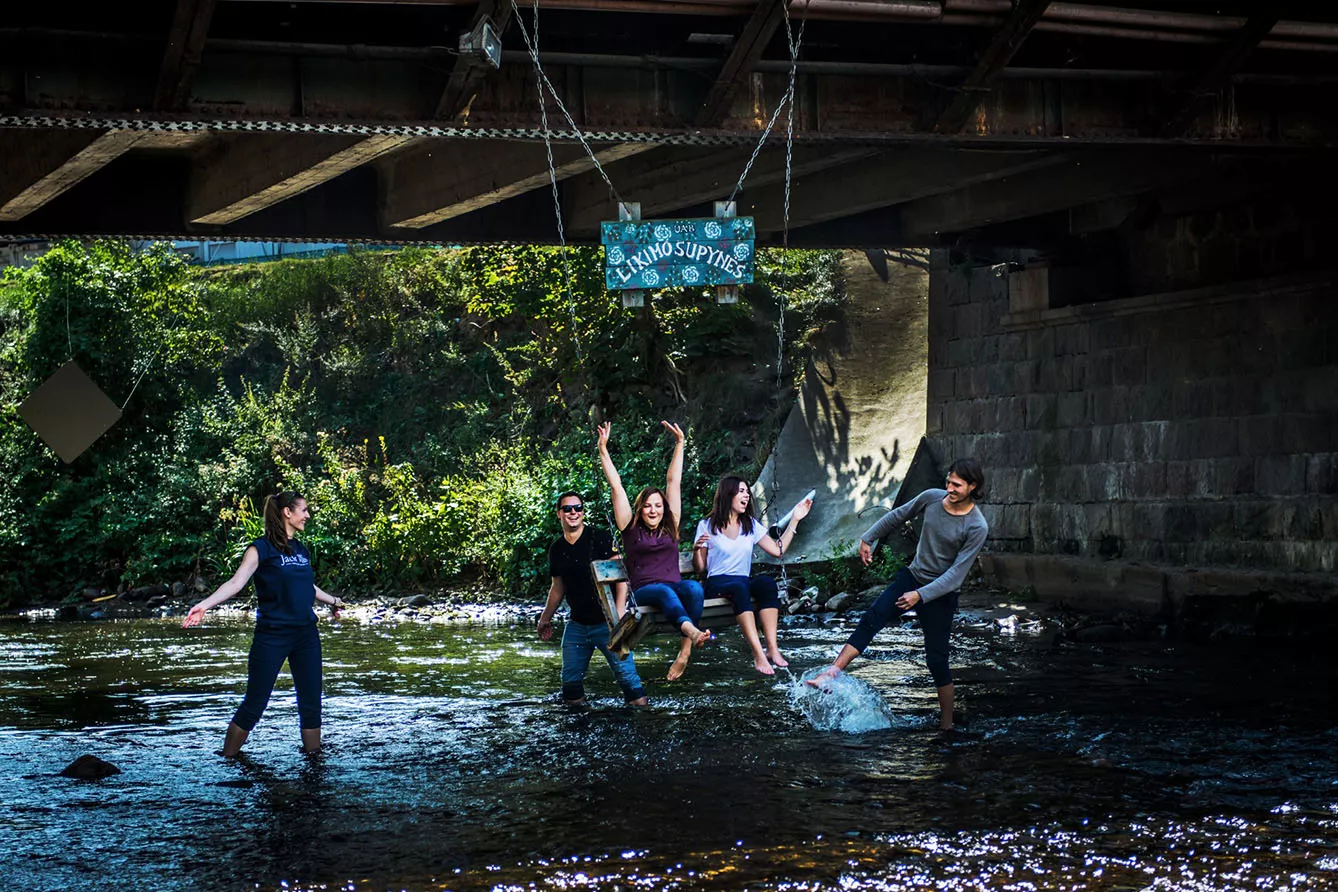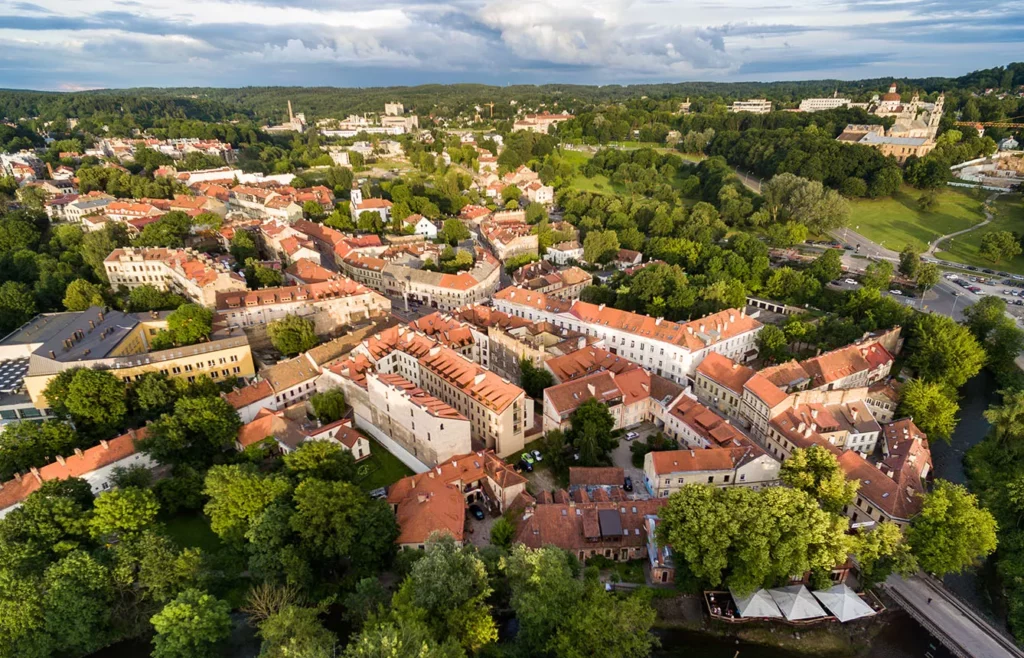Its looks are relatively inconspicuous—just a fragment of Vilnius’s old town, a few streets on a small, sloping hill. But to Lithuanians, it’s the oasis of artistic and intellectual freedom. And in the tradition of other enclaves of such freedom, it proclaimed itself a republic. And a tiny one, having some 7 thousand inhabitants and 60 hectares of area.
Užupis: from Jewish to bohemian district
Meaning Transriver Republic, Užupis was once a primarily Jewish district. As the tragic events of World War Two unrolled, most of its population was killed during the Holocaust. What remained was the old Jewish cemetery, which the Soviets then removed. The neighborhood emptied and started to be repopulated by artists and creatives.




First, under communism, they were vagrants and members of the bottom of the lower class. Run-down buildings provided nothing but shelter, and with a bare minimum of amenities at that. But when Lithuania proclaimed its independence in 1990, the times were already different, greatly influencing užupis.
Market rules made this once-depleted neighborhood a scarce resource, though not yet appreciated by developers. And the trend for artistic rather than vagrant squatting in these half-ruined houses came to Vilnius.
Therefore, the new inhabitants took artistic license, combined with the slightly anti-market sentiments so often embedded in modern artistic movements. While the rational business approach flourished all around, inhabitants of Užupis enjoyed their freedom from it.
Transriver Republic independence
And “independence” was declared in 1997. Everything was unofficial, of course. The army of eleven soldiers couldn’t defend the flag, and the cabinet of ministers oversaw currency that was not exchangeable to dollars. It had neither a gold reserve in New York nor some secret international gold vault.

But boy, did it have goods to export. They came in the form of art. Of some 7 thousand inhabitants, every seventh or so is an artist. And in the spirit of freedom that comes with art and creativity, Užupis Republic is colorful and has a bohemian feel.
And that leads to relatively strong diplomacy. It has some 500 ambassadors worldwide (that’s one per every 14 citizens). And among its honorary citizens is the Dalai Lama, who has visited the Republic twice. On his second visit, he even planted a tree in Tibet Square.
The constitution of the Užupis Republic is also a piece of art. It was written by author Romas Lieikis and included 41 points, such as “everyone has the right to be unique,” “everyone has the right to be able,” “a dog has the right to be a dog,” and “a cat is not obliged to love its owner, but must help in time of need.” On the need for protection, it states a similar ethos: “do not defeat… do not fight back… do not surrender.”
With its official national day on April Fools, April 1st, the Užupis Republic may not be an entirely serious enterprise. But the ideas behind it are worth taking seriously.







